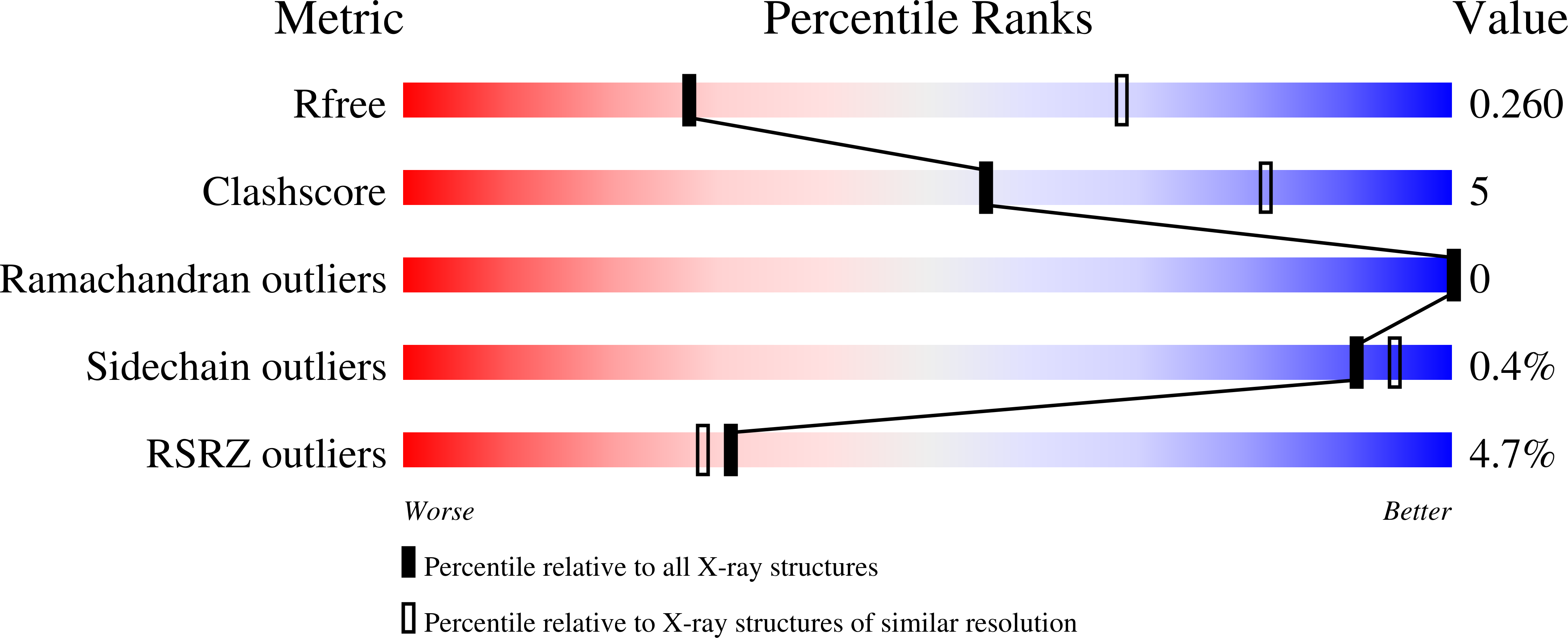Structure of bone morphogenetic protein 9 procomplex.
Mi, L.Z., Brown, C.T., Gao, Y., Tian, Y., Le, V.Q., Walz, T., Springer, T.A.(2015) Proc Natl Acad Sci U S A 112: 3710-3715
- PubMed: 25751889
- DOI: https://doi.org/10.1073/pnas.1501303112
- Primary Citation of Related Structures:
4YCG, 4YCI - PubMed Abstract:
Bone morphogenetic proteins (BMPs) belong to the TGF-β family, whose 33 members regulate multiple aspects of morphogenesis. TGF-β family members are secreted as procomplexes containing a small growth factor dimer associated with two larger prodomains. As isolated procomplexes, some members are latent, whereas most are active; what determines these differences is unknown. Here, studies on pro-BMP structures and binding to receptors lead to insights into mechanisms that regulate latency in the TGF-β family and into the functions of their highly divergent prodomains. The observed open-armed, nonlatent conformation of pro-BMP9 and pro-BMP7 contrasts with the cross-armed, latent conformation of pro-TGF-β1. Despite markedly different arm orientations in pro-BMP and pro-TGF-β, the arm domain of the prodomain can similarly associate with the growth factor, whereas prodomain elements N- and C-terminal to the arm associate differently with the growth factor and may compete with one another to regulate latency and stepwise displacement by type I and II receptors. Sequence conservation suggests that pro-BMP9 can adopt both cross-armed and open-armed conformations. We propose that interactors in the matrix stabilize a cross-armed pro-BMP conformation and regulate transition between cross-armed, latent and open-armed, nonlatent pro-BMP conformations.
Organizational Affiliation:
Department of Biological Chemistry and Molecular Pharmacology, Harvard Medical School, Boston, MA 02115; Program in Cellular and Molecular Medicine, Children's Hospital Boston, Boston, MA 02115; Department of Molecular and Structural Biology, School of Life Sciences, Tianjin University, Tianjin 300072, China;


















